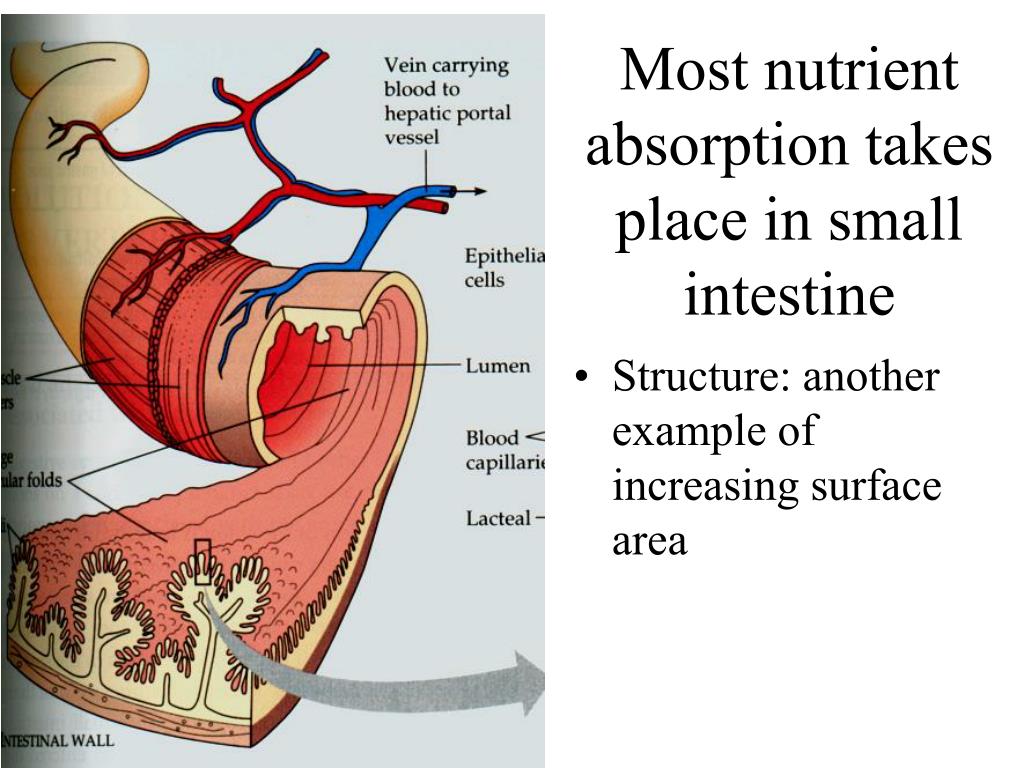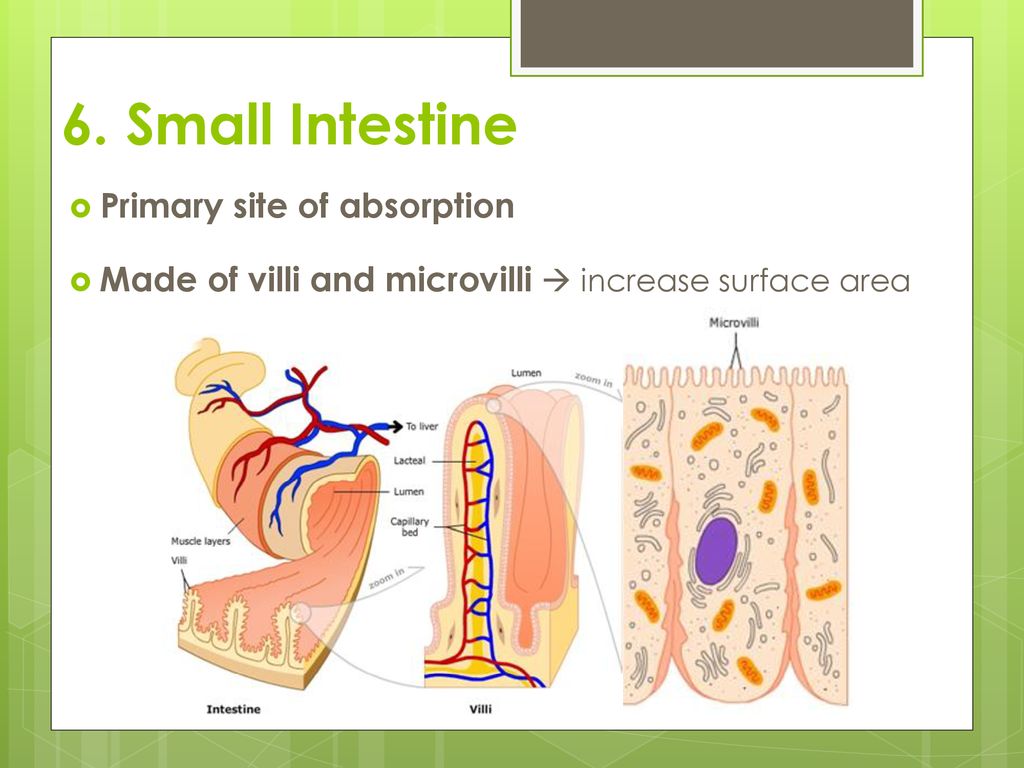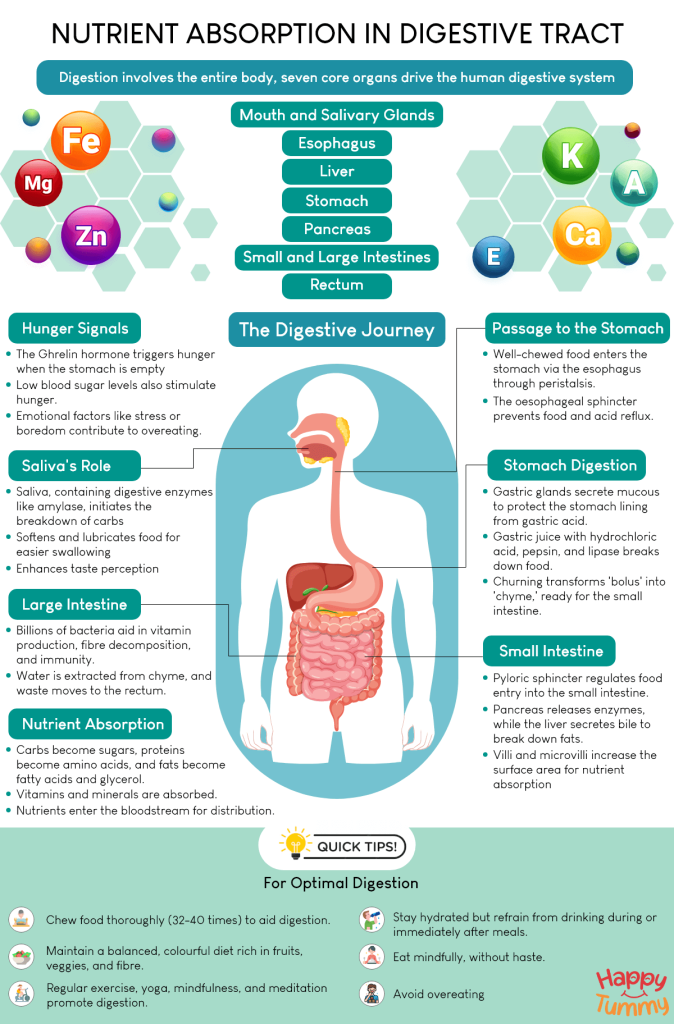The Primary Site Of Micronutrient Absorption Is The

The small intestine, a winding tube spanning roughly 20 feet, isn't just a digestive workhorse; it's the undisputed champion of micronutrient absorption. Scientists and medical professionals have long recognized its pivotal role, and ongoing research continues to refine our understanding of this complex process.
This article delves into the specific regions and mechanisms within the small intestine responsible for extracting essential vitamins, minerals, and other vital micronutrients from the food we consume. Understanding this process is crucial for addressing nutrient deficiencies, optimizing dietary strategies, and developing targeted therapies for malabsorption disorders.
The Small Intestine: A Micronutrient Powerhouse
The small intestine, comprising the duodenum, jejunum, and ileum, boasts a unique structure that maximizes nutrient absorption. This architecture features circular folds, villi, and microvilli, significantly expanding the surface area available for absorption.
Duodenum: The Initial Stage
The duodenum, the shortest segment, primarily focuses on chemical digestion. Here, secretions from the pancreas and gallbladder neutralize stomach acid and break down complex molecules.
While the duodenum plays a crucial role in preparing nutrients, its contribution to overall micronutrient absorption is relatively limited. Iron and some water-soluble vitamins like folate begin their absorption journey in the duodenum.
Jejunum: The Absorption Hub
The jejunum, the middle section, is the primary site of micronutrient absorption. Its extensive surface area and specialized transport mechanisms make it highly efficient.
Most water-soluble vitamins, including vitamins B1, B2, B3, B6, B7, and C, are absorbed in the jejunum. Minerals like calcium, magnesium, and zinc also find their way into the bloodstream here.
The jejunum is particularly well-equipped for absorbing nutrients requiring active transport, utilizing specialized proteins to ferry them across the intestinal lining.
Ileum: The Final Sweep
The ileum, the final segment, focuses on absorbing vitamin B12 and bile salts. These bile salts are recycled back to the liver, playing a crucial role in fat digestion.
Vitamin B12 absorption requires a special protein called intrinsic factor, produced in the stomach. This complex is then absorbed in the ileum.
The ileum also absorbs any remaining nutrients that were not fully absorbed in the jejunum, acting as a final safety net.
Absorption Mechanisms: A Symphony of Processes
Micronutrient absorption involves a complex interplay of different mechanisms. These mechanisms range from passive diffusion to active transport, tailored to the specific characteristics of each nutrient.
Passive diffusion allows small, fat-soluble molecules like some fat-soluble vitamins (A, D, E, and K) to cross the intestinal lining down a concentration gradient.
Active transport, on the other hand, requires energy and specialized carrier proteins to move nutrients against a concentration gradient. This is essential for absorbing nutrients that are present in low concentrations in the intestinal lumen.
Some nutrients, like vitamin B12, are absorbed via receptor-mediated endocytosis, where they bind to a specific receptor on the cell surface and are internalized into the cell.
Factors Affecting Micronutrient Absorption
Several factors can influence the efficiency of micronutrient absorption. These factors include age, health status, dietary habits, and the presence of certain medications.
Certain medical conditions, such as celiac disease and Crohn's disease, can damage the intestinal lining and impair nutrient absorption. Surgical removal of parts of the small intestine can also reduce absorption capacity.
Interactions with other nutrients and compounds in food can also affect absorption. For example, the presence of phytic acid in grains can inhibit the absorption of minerals like iron and zinc.
Implications for Public Health
Understanding the primary role of the small intestine in micronutrient absorption is essential for addressing nutrient deficiencies worldwide. Deficiencies in essential vitamins and minerals can lead to a range of health problems.
Fortification of food products with essential micronutrients has proven to be an effective strategy for improving public health. Supplementation is another option, particularly for individuals at risk of deficiency.
Promoting a balanced and varied diet rich in fruits, vegetables, and whole grains is crucial for ensuring adequate micronutrient intake. Public health initiatives and educational programs play a vital role in raising awareness.
Ongoing Research and Future Directions
Researchers continue to explore the intricacies of micronutrient absorption in the small intestine. This includes investigating the role of the gut microbiome and identifying novel transport mechanisms.
Advances in nanotechnology are leading to the development of targeted drug delivery systems that can improve micronutrient absorption. These systems can deliver nutrients directly to the cells that need them most.
Ultimately, a deeper understanding of micronutrient absorption will pave the way for more effective strategies for preventing and treating nutrient deficiencies, leading to improved health outcomes for individuals and populations worldwide.
The small intestine, with its remarkable structure and sophisticated mechanisms, remains the cornerstone of micronutrient absorption. Its continued study promises a healthier future for all.














![The Primary Site Of Micronutrient Absorption Is The [GET ANSWER] The primary site of nutrient absorption is the small](https://cdn.numerade.com/ask_images/b4eb23ba0c7f4ac9ade1d12cc329a314.jpg)



